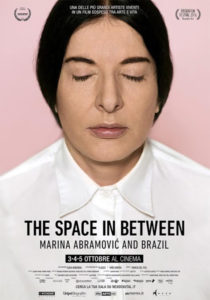
One such case, which Maurício describes as his “greatest failure,” took place at the third Transperformance festival in Rio de Janeiro. Failure is ultimately the promoter for change.’” “I have learned that artists never have control over how their work is perceived or interpreted,” he says. While Maurício relishes being able to offer such a space, he is the first to admit that creating art which is defined by a lack of control can be challenging. This intense response shows just how powerful one can feel when liberated of the expected constraints of society, even if it is for a few short moments within an art gallery. Then he took a deep breath and said, ‘Thank you, I needed that!’” Then he turned to me, with anger in his eyes.” Maurício recalls. “One guy flew into a rage and began breaking everything in sight. More extreme reactions saw individuals indulge their most destructive impulses. People painted his body, began knitting, sprayed graffiti or simply sat and talked to one another. Others took to making their own art, particularly children. Some visitors were confused or shy, assuming that all other participants were official performers. “I had to redistribute the aura of the artist, just by going up to people and saying, ‘Hi, how are you, what is your name?’ and ‘This space is for you.’” The response was mixed. Within this cultural hub he created a space that was entirely at the public’s disposal, complete with food and drink, textiles, art supplies, tools and more. It was presented as part of Terra Comunal, a project conceived by The Marina Abramović Institute, at Sesc Pompéia in São Paulo. Such intent is clear in one of his best-known works, titled The Bond. “I thought those parts of the course were pretty boring, but my final presentation took the form of a performance, which set me on this path.”įor Maurício, the art is ultimately in the action, not the outcome. Her astute interrogation of human relationships, in which a physical and mental transference of power can often become volatile (notably in the 1974 performance Rhythm 0) has been particularly influential on an artist who seeks to give control over to his audience, without any prescribed outcome.Īlong with this avant-garde awakening, Maurício’s rather more traditional training in art teaching has shaped his practice, in terms of breaking down ideas around communication, sharing and building knowledge. And it is worth noting that at art school we were only really learning about men.” Marina’s complex understanding of aggression and pain, but also intimacy and peace, have long informed Maurício’s practice. “Here is a true radical, doing things no one had ever done throughout history.

“From that moment on I only wanted to perform.” These groundbreaking figures showed Maurício that the concept of art – and the role of the artist – had limitless possibilities. However, his world was turned upside down when his tutor introduced him to the work of Joseph Beuys, Marina Abramović and Chris Burden: artists who tore up the rule book and pushed the boundaries of performance. His artist mother taught him to paint from a young age, and by the time he enrolled in art school in São Paulo he already considered himself a painter.


 0 kommentar(er)
0 kommentar(er)
